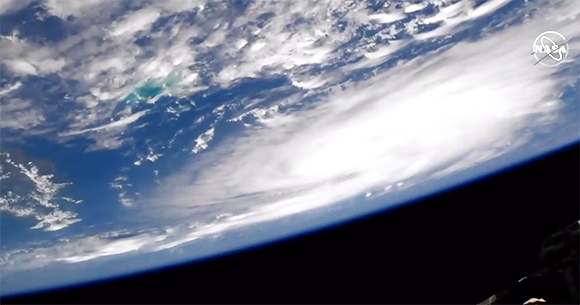Names of 2020 Atlantic Hurricane Storms Released, Preseason Forecast Calls for 15 Named Storms
By Space Coast Daily // February 23, 2020
pre-season forecast calls for 15 named storms, seven hurricanes and four major hurricanes

BREVARD COUNTY, FLORIDA – The 2020 Atlantic hurricane season will officially start on June 1 and below are the names for the season, which peaks September 10 and ends November 30.
Forecasts of hurricane activity are issued before each hurricane season by noted hurricane experts such as Philip J. Klotzbach and his associates at Colorado State University; and separately by NOAA forecasters.
The pre-season forecasts, released on December 19, 2019, by Tropical Storm Risk, a public consortium consisting of experts on insurance, risk management, and seasonal climate forecasting at University College London, issued an extended-range forecast predicting a slightly above-average hurricane season.
In its report, the organization called for 15 named storms, seven hurricanes, four major hurricanes. This forecast was based on the prediction of near-average trade winds and slightly warmer than normal sea surface temperatures across the tropical Atlantic as well as a neutral El Niño–Southern Oscillation phase in the equatorial Pacific.

NAMING SYSTEM
According to the National Hurricane Center, names are only given to tropical storms that have sustained wind speeds higher than 39 mph and will stay with the storm as it reaches hurricane strength of maximum sustained winds of 74 mph or higher.
Prior to the 1950s, meteorologists kept track of hurricanes and tropical storms by the year and the storms’ order for that year.
During the 1950s, meteorologists realized that it was difficult to keep track of unnamed storms—particularly if there was more than one storm happening at any given time. By 1953, meteorologists around the U.S. were using names for tropical storms and cyclones.
The World Meteorological Organization is responsible for developing the names for storms.
The names alternate between male and female names, listed alphabetically and in chronological order starting with A and omitting Q and U, X, Y, and Z. If more than 21 names are required during a season, the Greek alphabet is used.
Tropical Storms vs. Hurricanes

2020 Atlantic Hurricane Storms:
• Arthur
• Bertha
• Cristobal
• Dolly
• Edouard
• Fay
• Gonzalo
• Hanna
• Isaias
• Josephine
• Kyle
• Laura
• Marco
• Nana
• Omar
• Paulette
• Rene
• Sally
• Teddy
• Vicky
• Wilfred
CLICK HERE FOR BREVARD COUNTY NEWS














